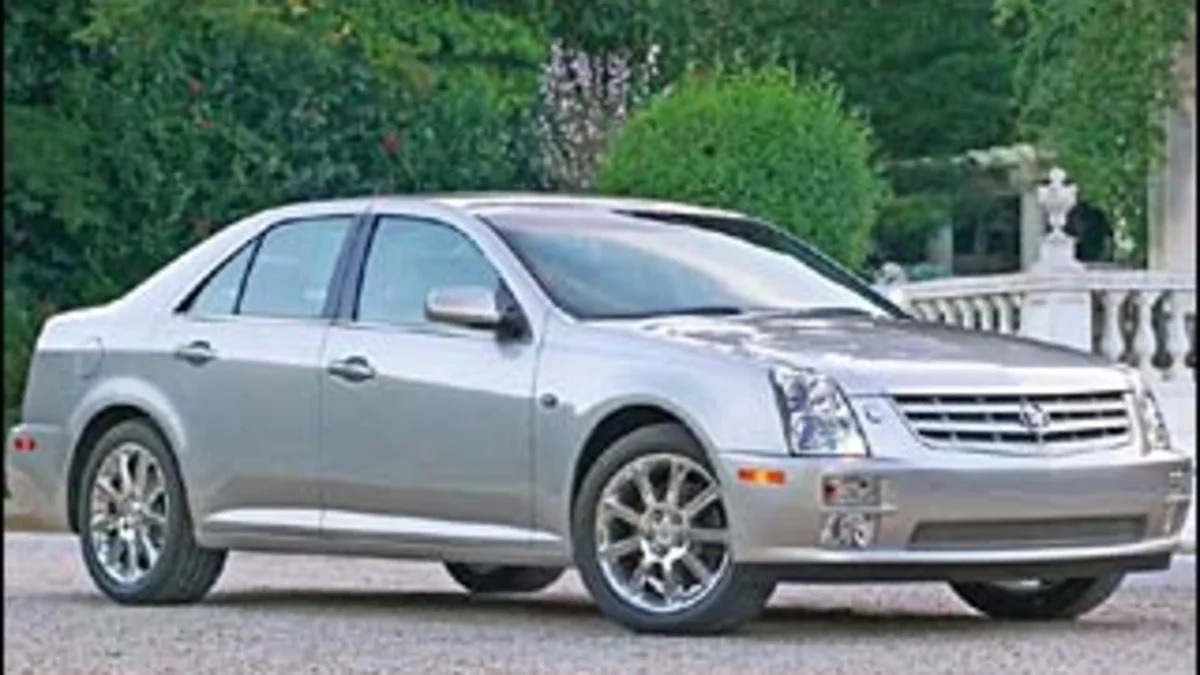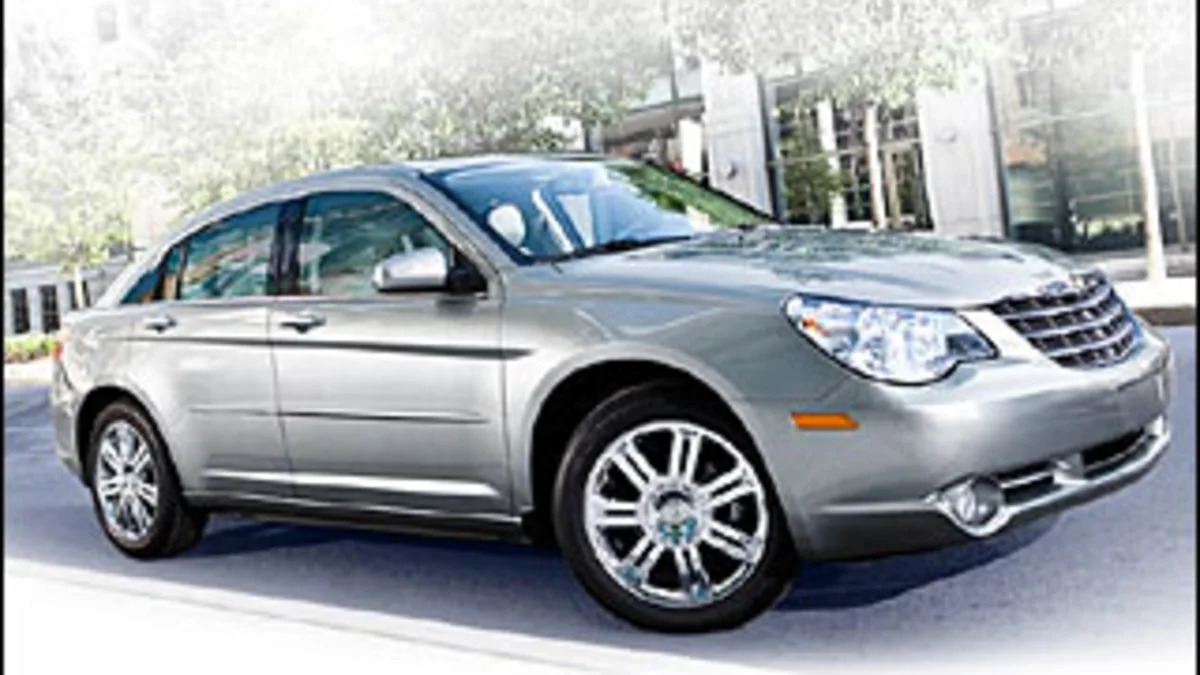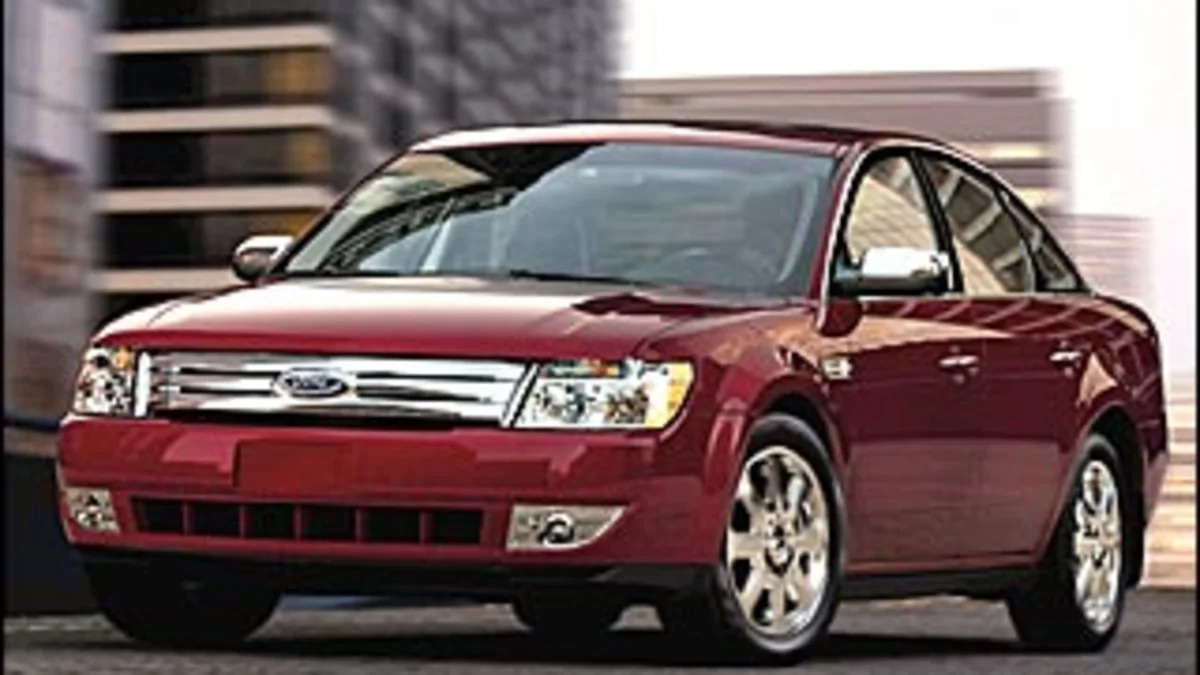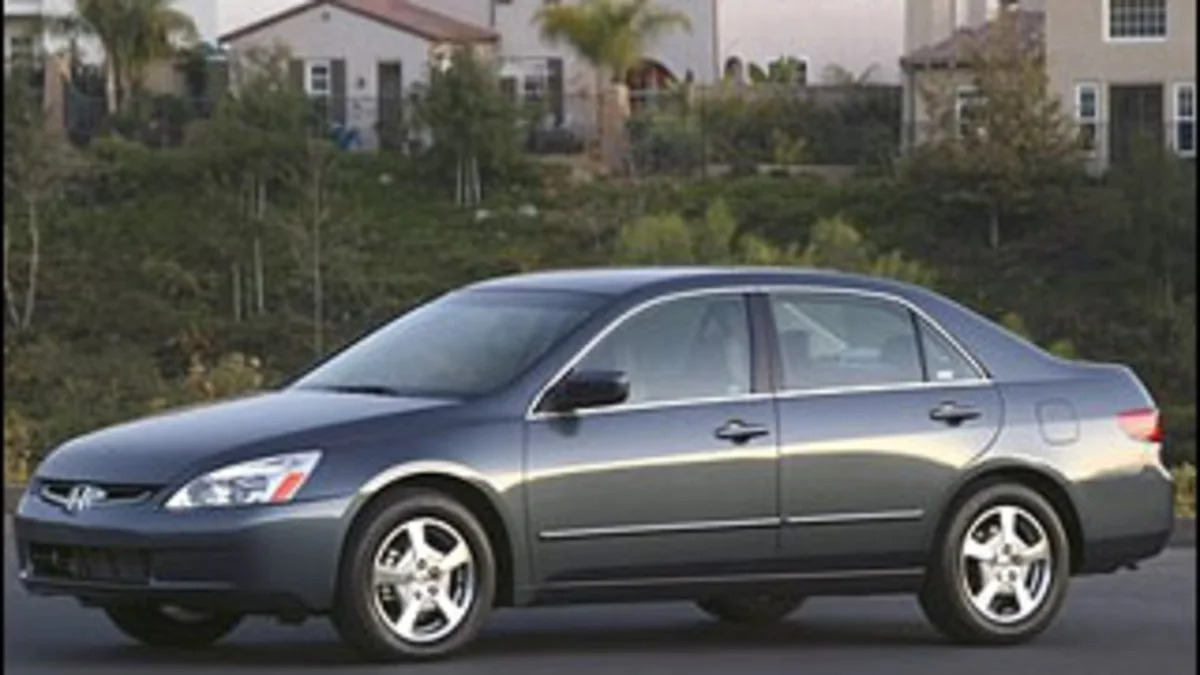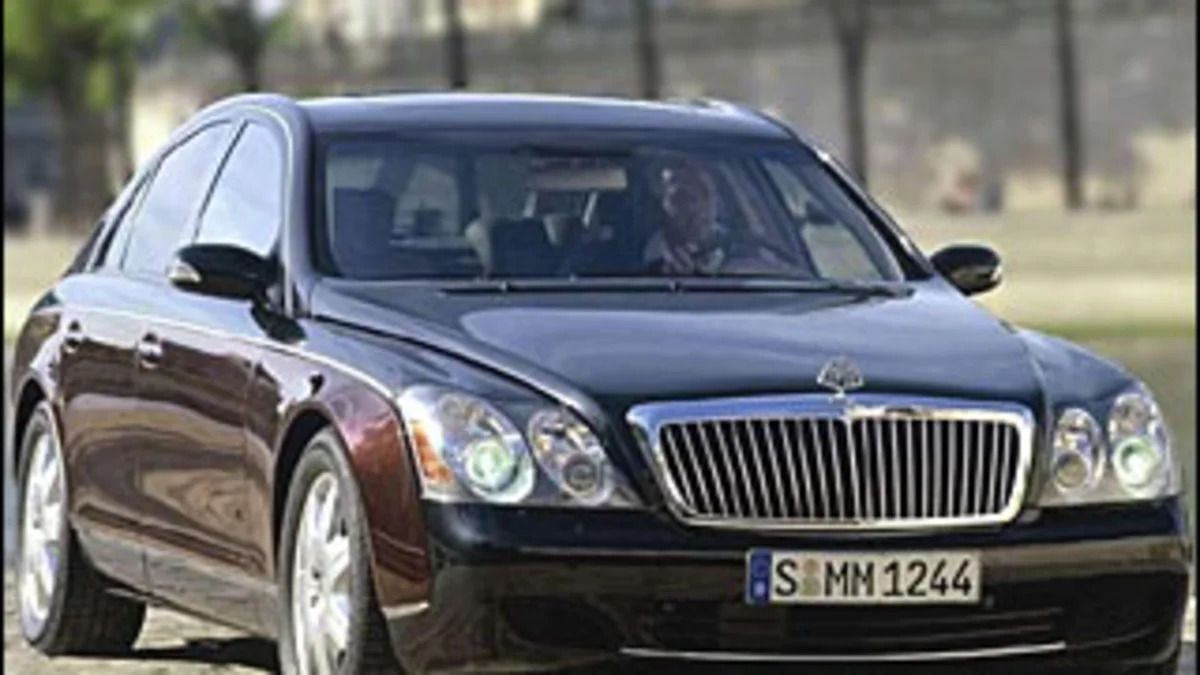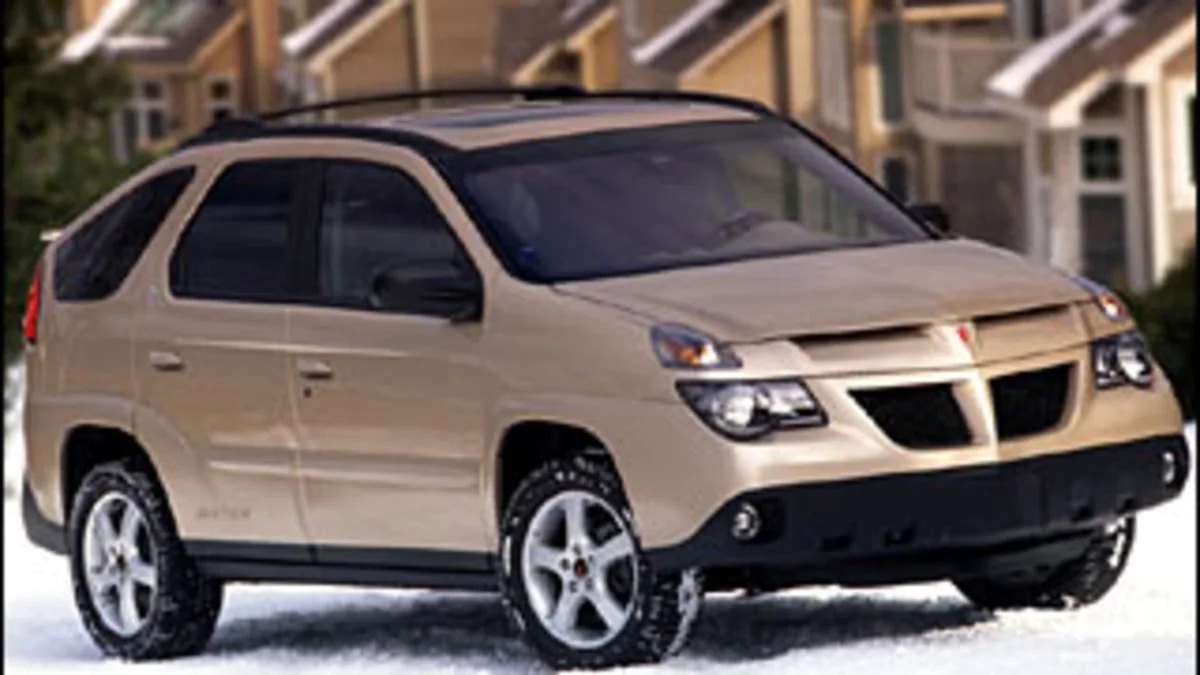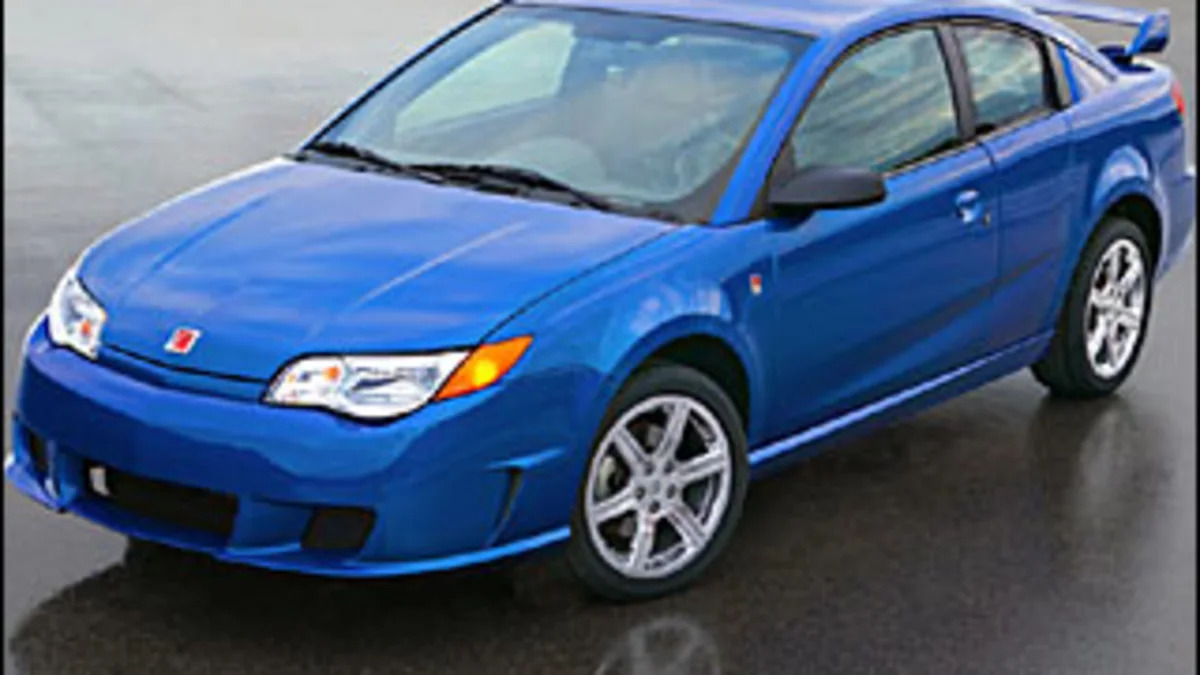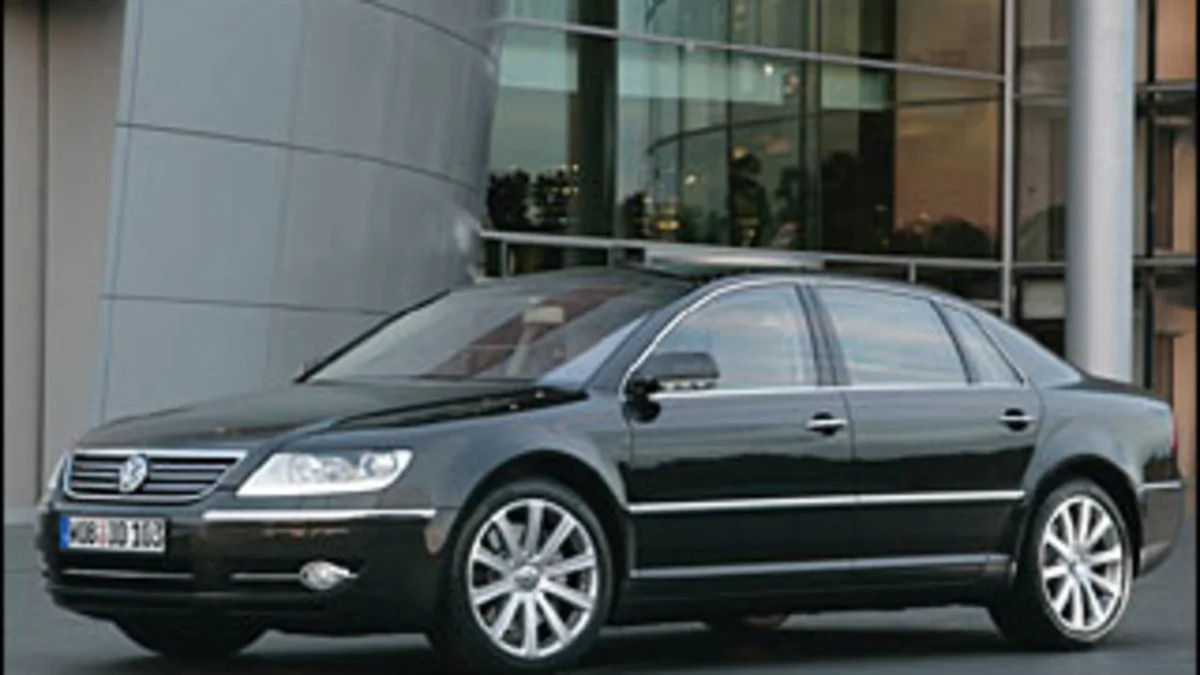Dirty Dozen: 12 Biggest Flops Of The Last Decade
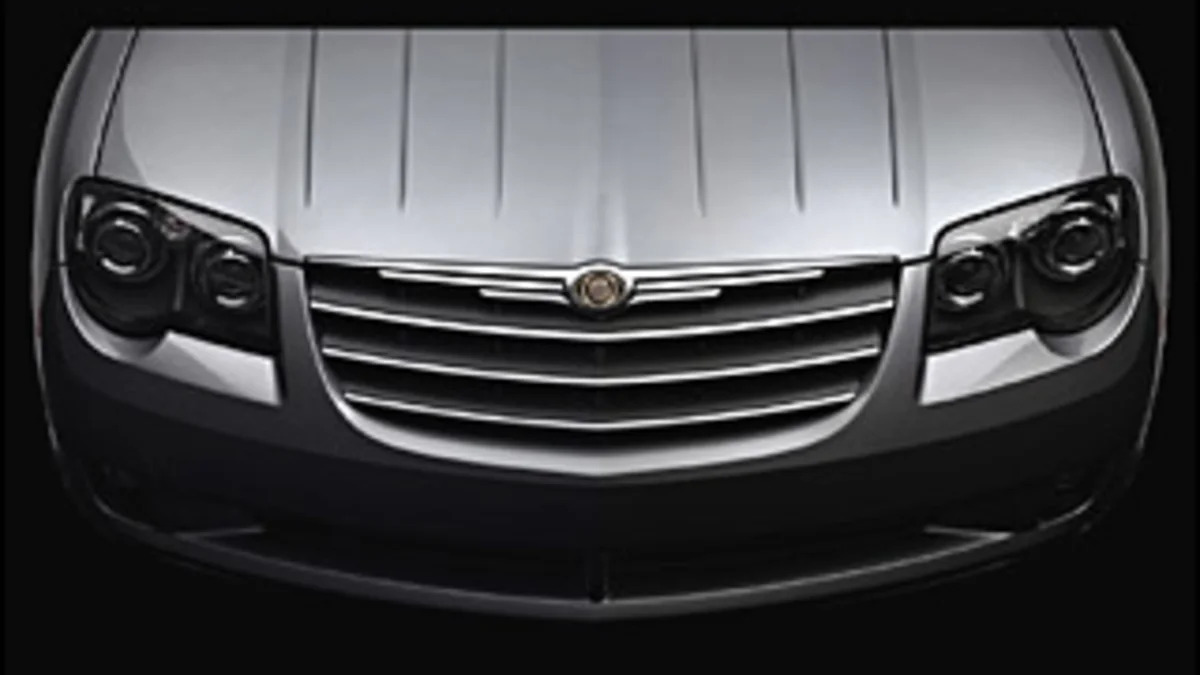
-

Introduction
Now that the 2000s are officially drawing to a close, it's time for us to look back at the decade-that-was and reflect on the hits and misses in the automotive industry. Naturally, we expect that some models will hit the target square in the bulls-eye while others will fall just short of becoming a marketplace success. For every few near-misses, though, there seems to be a new model launch that just completely comes out of nowhere and goes down in flames, Hindenburg-style.
We put our heads together with our pals at Autoblog to see if we could all agree on at least 10 major automotive busts, and somewhat surprisingly, we managed to come up with a dozen. Not every choice was made unanimously, meaning that you may be surprised by some of our inclusions. That said, grab some popcorn, a candy bar and a supersized Coke, then click here to see our list of the Twelve Biggest Busts of the Last Decade.- See More Biggest Flops
- Worst Car Trends
- Best And Worst Co-Branded Cars Of All Time
- Worst Automotive Designs Of All Time
-
Cadillac STS
Back in 2004 when the STS was introduced as a 2005 model, Cadillac was the poster boy for America's auto industry (if there was such a thing). Buoyed by its well-received CTS sedan and high-profile -- and profit-rich -- Escalade SUV, the STS was supposed to really put the bricks to the European luxury establishment.
Instead, what we got was a more conservatively styled sedan that has never managed strike fear into BMW, Mercedes-Benz, Audi, or much of anyone - much less deliver awards from the automotive press or (more importantly), solid sales numbers. In fact, owing to its large-for-its-class size, the CTS was an appreciably better car for less money with few penalties, and the second-gen CTS has rendered the STS all but completely redundant.
To be fair, there were slow sellers in Cadillac's portfolio back in 2005, but they were either low-investment niche vehicles (XLR) or at least enthusiasts' darlings (SRX). The STS was neither, and even a high-horsepower STS-V version hasn't been enough save the range from obscurity and flophood.- See More Biggest Flops
- Worst Car Trends
- Best And Worst Co-Branded Cars Of All Time
- Worst Automotive Designs Of All Time
-
- Image Credit: Chrysler
Chrysler Sebring and Dodge Avenger
You knew this was coming, right? This is the car that seems to have come to represent all that has been wrong with Chrysler over the last several years. While the Sebring never really competed all that well with rivals from General Motors and Ford -- let alone standard-bearers from Honda and Toyota -- the current model is actually significantly less interesting car than the original Chrysler Cloud Cars from the previous decade.
Pair a flaccid chassis with uninspiring engines and a ridiculously plasticky interior that doesn't belong in an '80s Hyundai and you have the recipe for an undesirable automobile. With the Sebring, though, it only gets worse with the car's hideous sheetmetal. The look was supposed to be inspired from the Crossfire, which, though it had plenty of its own faults, was visually interesting. That shape, though, does not translate well into a midsize sedan, to put it mildly.
While the Sebring may be the worst car in Chrysler's lineup, its sibling from Dodge isn't much better. It's generally agreed that the Avenger at least looks a bit more attractive than the Sebring -- though certainly not by much -- but the Dodge is still plagued by the same uncompetitive engines and lego-brick interior finish as its Chrysler stablemate.- See More Biggest Flops
- Worst Car Trends
- Best And Worst Co-Branded Cars Of All Time
- Worst Automotive Designs Of All Time
-
- Image Credit: Ford
Ford Five Hundred
The Ford Five Hundred is everything the Chrysler Sebring is not. So then, why are both of them on this same list? Where the Sebring was offensive and uncompetitive, the Five Hundred was bland and uninspiring. Two very different paths to automotive busthood, but each car had a similar effect on its intended audience ... which is to say they just chose to purchase a competitor's car.
None of this is to say that the Ford Five Hundred is a bad car, because it isn't. If all you are looking for is a large, roomy automotive appliance to get from your two-car garage in the suburbs to work, the grocery store and back, you'll find the Five Hundred fits your needs rather well. If you happen to be an enthusiast with actual driving enjoyment high on your list of necessities, you'll find that the Five Hundred is the automotive equivalent to a bottle of melatonin.- See More Biggest Flops
- Worst Car Trends
- Best And Worst Co-Branded Cars Of All Time
- Worst Automotive Designs Of All Time
-
- Image Credit: Honda
Honda Accord Hybrid
Honda just hasn't managed to have much luck with its hybrids. Though it beat its longtime rival from Japan -- Toyota, that is, with its Prius hybrid -- to the market with the original Insight at the start of the decade, there's no question which company has seen better success in the eyes of consumers.
What exactly is wrong with the Honda Accord Hybrid? Well, nothing really. Except that it was too expensive for its small gain in fuel economy and was next to impossible to drive smoothly, especially at low speeds.
Honda decided to make the Hybrid the range-topping model in the Accord line, and as such blessed it with a full options list. That made it expensive. Further, Honda decided to tune the drivetrain for power and performance, not ultimate efficiency, so its fuel economy was less than stellar and the powerful engine and electric motor made the car very punchy in the parking lot. Very un-Honda-like indeed.- See More Biggest Flops
- Worst Car Trends
- Best And Worst Co-Branded Cars Of All Time
- Worst Automotive Designs Of All Time
-
- Image Credit: Jaguar
Honda Insight
Remember how we said that Honda hasn't had much luck with its hybrids? If the Accord Hybrid was Exhibit A, we rest our case with the Insight, and we'll go ahead and include both the original two-seater and the current reincarnation as a cheaper alternative to the Prius.
On glassy-smooth roads, the latest Insight seems to ride and handle just fine. Throw some bumps, potholes and frost heaves its way, though, and get ready for a bumbling chassis that crashes over the pavement. Paradoxically, the Insight fails to feel sporty when thrown around a nice, curvy road ... giving you the worst of both worlds all at the same time.
Not only that, Honda's Integrated Motor Assist technology fails to match the slightly pricier Prius in economy, and the Insight is notably slower in a straight line than its rival from Toyota. Plus, there's hardly any space inside -- especially in the headroom-lacking rear seat. If you're looking for the cheapest way to put your small family into a hybrid, the Insight delivers on the cost front. Just be sure to drive all your options before signing on the dotted line.- See More Biggest Flops
- Worst Car Trends
- Best And Worst Co-Branded Cars Of All Time
- Worst Automotive Designs Of All Time
-
- Image Credit: Maybach
Maybach 57 and 62
Wait a second now ... what are two of the most luxurious cars ever offered for sale doing sharing space with the likes of the Chrysler Sebring on our list? To put it quite simply, the Maybach 57 and 62 were undeniable automotive busts.
When Mercedes-Benz launched Maybach back in 2002, the German automaker had very high expectations for the line -- as in competing on equal footing with -- Royce at the tippy top of the automotive elite list. MB hoped to sell about a thousand units per year, and that turned out to be extremely optimistic. In reality, the brand barely sold a third of Rolls-Royce's totals here in the States, and in 2007 Mercedes-Benz was forced to buy back 29 of its U.S. Maybach dealerships.- See More Biggest Flops
- Worst Car Trends
- Best And Worst Co-Branded Cars Of All Time
- Worst Automotive Designs Of All Time
-
- Image Credit: Pontiac
Pontiac Aztek
Edsel. Yugo. Aztek. Three automotive punch lines all from different decades. No list of automotive busts -- regardless of what decade you're examining -- would be complete without a mention of the Pontiac Aztek.
First of all, it's rather difficult to make a crossover vehicle based on a minivan chassis. Crossovers are supposed to be the kinds of SUVs that buyers actually wanted. But the Aztek ripped the Sport right out of Sport Utility Vehicle, with an overworked 3.4-liter pushrod engine and archaic four-speed automatic transmission.
Second ... well, just look at the thing. Where the original concept from 1999 was original and interesting, the production version was just plain ugly. Plus, it was covered head-to-toe in the kind of horrible Pontiac-spec plastic cladding everyone was sick of by the mid-1990s.
Put it all together and you have what's likely the single biggest automotive bust of the decade.- See More Biggest Flops
- Worst Car Trends
- Best And Worst Co-Branded Cars Of All Time
- Worst Automotive Designs Of All Time
-
- Image Credit: Saturn
Saturn Ion
It's impossible to top the Aztek on this list, but at least it seems as if The General was really trying something new with Pontiac's disaster. The Saturn Ion, on the other hand, seems to have been designed and built by a group of people who had just completely given up all hope of designing a competitive product.
Stylish? No. Quick? Barring the supercharged Redline, no. Reliable? No. Making matters worse was the almost universally-hated central gauge cluster, which was surrounded by hard plastic bits with nary a soft touch covering in sight. Was there anything good about the Ion? If we're being honest, no, not really. No surprise, then, that the Ion kicked off the planetary brand's unfortunate death march.- See More Biggest Flops
- Worst Car Trends
- Best And Worst Co-Branded Cars Of All Time
- Worst Automotive Designs Of All Time
-
- Image Credit: Toyota
Toyota Tundra
Toyota has tried so hard to build a competitive truck that it's almost painful to call the Tundra a bust. Full-size pickup trucks are a uniquely American invention and the Japanese automaker has gone through thee distinct phases (including the T100) in its quest to understand what truck buyers really want. Apparently, it hasn't worked.
If the first Tundra was a bit too small, Toyota surely rectified that little problem with the truck's latest redesign in 2007, when it matched or beat its American competitors in every meaningful measurement. In fact, some bits felt big just for the sake of being big, such as the interior HVAC controls. If big is good, then super sized is better, right? Cap that massiveness off with a 5.7-liter V8 engine with 381 horsepower and 401 pound-feet of torque and you seemingly have a winning recipe.
Perhaps not. Even when fresh and new, the Tundra failed to live up to Toyota's lofty sales goals, which may also have been due in part to early reliability problems that seemed at the time highly un-Toyota-like. Reports of frame rust on the previous generation coupled with recalled propeller shafts, ball joints and broken camshafts don't exactly give confidence to the traditional truck buyer. So far in 2009, sales figures could best be described as dismal, down by nearly half from the previous year.- See More Biggest Flops
- Worst Car Trends
- Best And Worst Co-Branded Cars Of All Time
- Worst Automotive Designs Of All Time
-
- Image Credit: Volkswagen
Volkswagen Phaeton
By nearly all accounts, Volkswagen succeeded in crafting a full-size premium luxury automobile that's capable of competing with the likes of BMW, Mercedes-Benz and Lexus. Oh, and also its own Audi A8. Just about everyone who got behind the wheel of the massive VeeDub found that the car was every bit as good as its rivals. So, what's the problem? In part, it's that VW chose to match those much more established competitors in price.
At least here in the United States, it turns out that very few people were willing to spend upwards of $100,000 on a Volkswagen that shares floor space at the dealership with a bright yellow New Beetle -- even one equipped with a 420-horsepower 6.0-liter W12 engine underhood. In 2004, the Phaeton's sales figures came in at 1,433 units but fell to just 820 in 2005, the car's last year for sale in the States.- See More Biggest Flops
- Worst Car Trends
- Best And Worst Co-Branded Cars Of All Time
- Worst Automotive Designs Of All Time
